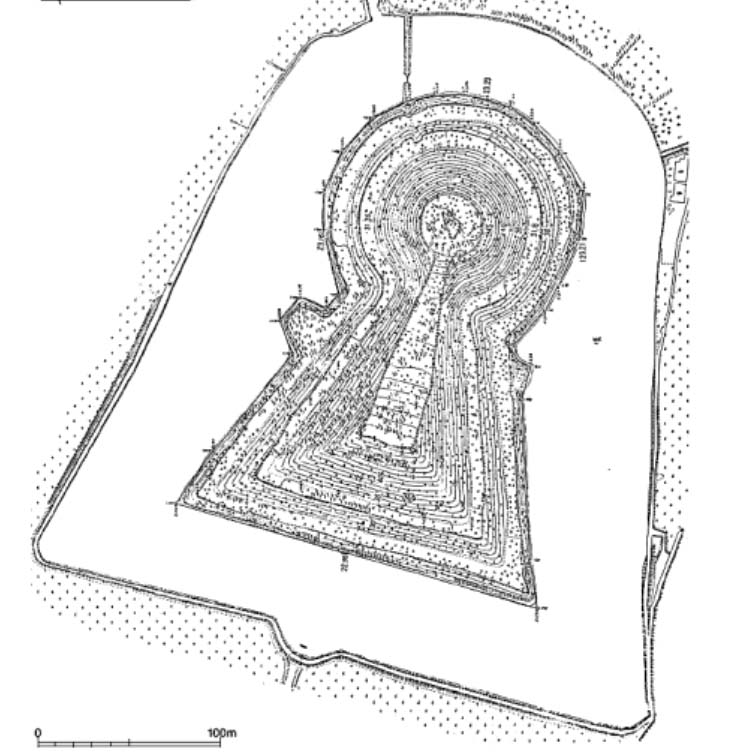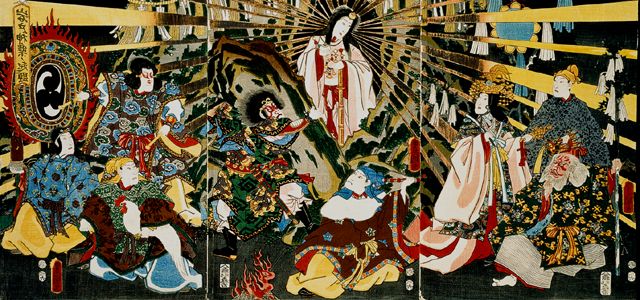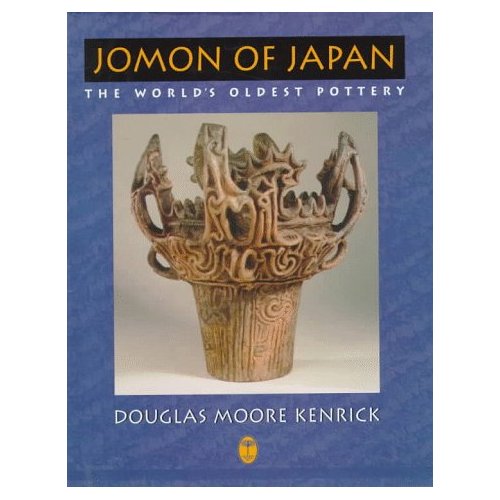|
10,000 years ago in Japan
The Jõmon culture has begun to form here.
The people's name means "corded ware," a reference to their pottery style.
They decorate their pots with rolled clay cord designs.
9000 years ago in Japan
The Jõmon culture is still in its formative years,
but don't tell that to the energetic Jõmon people living around Tokyo Bay.
Their ancestors long ago found the prolific shellfish breeding grounds around the bay, and elsewhere in Japan.
Tremendous quantities of shells are piling up at seaside kitchens.
At the kitchens, shells are shucked and their contents consumed on the spot.
They are the sushi bars of Japanese prehistory.
8000 years ago in Japan The Jõmon people are still hanging out, shucking shells, eating fish,
making the world's first pottery, and sculpting figurines. This is a very stable and peaceful culture.
It is celebrating its thousandth birthday, but the Jõmon people don't realize it, because they
don't have a written language. However, we can guess that they told long stories detailing exploits of
ancestors long past.
7000 years ago in Japan, Wow! The Jõmon are here still here, living their peaceful ways.
On their two thousandth birthday, they are creating figurines that
some archaeologists call "fertility symbols" or "earth mother goddesses." These figurines are placed
together with phallic shaped stones. Some of the figurines are painted red and polished. Many of them
are used in rituals during which a figurine's leg or arm is broken, perhaps to represent the liberating
of the limb from a disease.
6000 years ago in Japan, the Jõmon are still living their peaceful oceanside lifestyle.
Tattooing is in vogue.
5000 years ago in Japan, Jõmon create clay figurines that will be categorized by archaeologists into five groupings.
The first group, realistic figures,
second, grotesque figures,
third, figures with triangular faces,
fourth, figures with owl faces,
fifth, figures accompanying certain forms of pottery.
A majority of the figurines in all the categories have female attributes.
4000 years ago in Japan the Jõmon are at the height of their culture.
A significant change in the way the people are sculpting their figurines takes place.
They are still overwhelmingly female, but now the breasts represented on the figurines are "pendulant" and the bellies of the figurines are pregnant.
|
|
 3000 years ago in Japan there is an influx of people from Korea. Cultural melding. The
Yayoi People
have the same fine gray slip pots found in prehistoric Korean sites.
The Yayoi build large keyhole shaped pyramids.
They also continue the tradition of sculpting figurines.
In this era the figurines are used to encircle burial mounds representing the pregnant belly of Mother Earth
from which the deceased is expected to be reborn.
3000 years ago in Japan there is an influx of people from Korea. Cultural melding. The
Yayoi People
have the same fine gray slip pots found in prehistoric Korean sites.
The Yayoi build large keyhole shaped pyramids.
They also continue the tradition of sculpting figurines.
In this era the figurines are used to encircle burial mounds representing the pregnant belly of Mother Earth
from which the deceased is expected to be reborn.
2000 years ago in Japan. Invasion from China. The two cultures meld. Japanese students travel to China to study.
1000 years ago in Japan. The creation myth presented in the
Shinto
religion informs the people who live during this age.
It speaks of the time when the sky and heaven emerged from
the primordial chaos. At that time, five primal dieties appeared.
They were followed by a series of mated dieties. The last of these couples were
the creative god and goddess, Izanami and Izanagi, also known
as He-Who-Invites and She-Who-Invites. Together, this pair creates the islands of Japan.
Izanami dies during childbirth, due to her offspring being none other than the God of Fire.
She descends into the underworld. Izanagi goes after his wife, but she drives him away,
ashamed of her condition. After his travels in the underworld, Izanagi cleans himself.
During this purification ritual, the Sun Goddess, Amaterasu, is born from his left eye.
The Moon God is born from his right eye. And a rather turbulent personality, the Storm God,
is also given birth at this time...from Izanagi's nose.
Amaterasu, the Sun Goddess and the Moon God ascend to the heavens. But Storm God comes for a visit
to Sun Goddess Amaterasu's place, and whoops, he ends up trashing it. Amaterasu goes into a cavern
and doesn't come out, throwing Earth into darkness (eclipses or solar equinoxes). She is lured to
emerge from the cavern by dieties who dance and party outside. When she emerges, her radiant warmth
returns to the Earth.
|
















